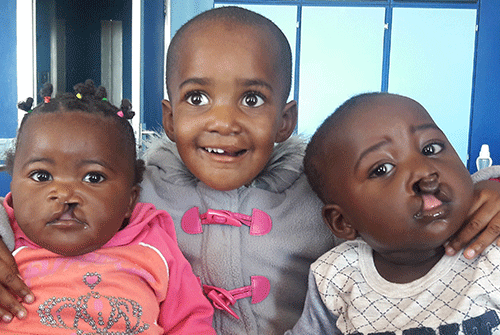The Nampharm Foundation, with partners, such as the health ministry and other medical professionals, has been working tirelessly around the clock, facilitating the procedures of surgically correcting closures of the cleft lip and cleft palates of children in Namibia.
A cleft lip and cleft palate are both oral-related birth defects that are also referred to as oral clefts or orofacial clefts. A cleft lip is a birth defect in which a baby’s upper lip does not form completely and has an opening in it. It is also referred to as a congenital split in the upper lip that can occur on one side (called a unilateral cleft lip) or both sides from the centre (called a bilateral cleft lip). Hence, a cleft lip occurs when the lip does not fully develop.
A cleft palate is also an oral birth defect; however, here, the baby’s palate (roof of the mouth instead of the lip) does not form completely and has an opening in it. Although a cleft lip and cleft palate may occur individually, they can occur simultaneously.
“Babies born with these defects may face various challenges with significant effects on their development and quality of life, such as difficulty in feeding with a normal feeding bottle, gasping a lot of wind through the open lip,” explained Nampharm Foundation manager Carol Musarurwa.
More notable challenges include food coming through the nose, caused by the open connection between the mouth and the nose, hearing problems, throat infections, inaudible speech, lack of confidence, dental problems with the development of teeth and ultimately leading to bullying as they grow older.
Sharing her opinion just before she stepped into the Rhino Park Hospital theatre to operate on a patient yesterday, Dr Susan Kruger briefly told Vital Signs, “What needs to be noted is that the defects occur and are often detected during the development stage of the foetus. The defects are atomically different. I must appreciate the ministry and Nampharm for capacitating us with the necessary equipment to do our jobs; that’s highly commendable”.
The foundation is supported by government by virtue of a signed agreement with the health ministry to offer these surgeries to all state children from all over Namibia.
Corrective surgery procedures are scheduled every second week at Rhino Park Private Hospital, and a dedicated multidiscipline team, consisting of specialists from the private and public sector, work collaboratively in this endeavour.
The foundation also liaises frequently with various departments within the health ministry, and a wonderful gesture also comes from a team of private medical specialists, who do so voluntarily.
The foundation stated that any child in need of facial reconstructive surgery, especially with this specific deformity qualifies, irrespective of their financial or medical aid status.
Musarurwa told Vital Signs the organisation has exemplary relationships with doctors and other medical professionals from all regions, who liaise with the foundation on patients requiring assistance to be registered under the programme.
“In Namibia, there has not been any official research to determine the causes of this defect – and internationally, data points out that it may be generic and can also be caused by abuse of alcohol and/or smoking of the mother,” she said.
Musarurwa added other possible causes identified related to obesity during pregnancy and inadequate nutrition, such as the lack of the intake of folic acid, can lead to a foetus developing this defect too.
“Since the inception of the Nampharm Foundation in 2005, we have registered almost 400 cases on our private database. Prior to the foundation’s existence, there have not been official statistics recorded; however, it must be noted that there were treatments from government and pre- and post-foundation inception of 2005. These statistics have not yet been consolidated to determine an accurate number of cases.”
Frederik van der Walt, one of the Nampharm directors, started the foundation in 2005, initially to assist children born with cancer.
By 2009, they decided to offer free facial reconstructive surgery, focusing on children born with cleft lips and palates.


